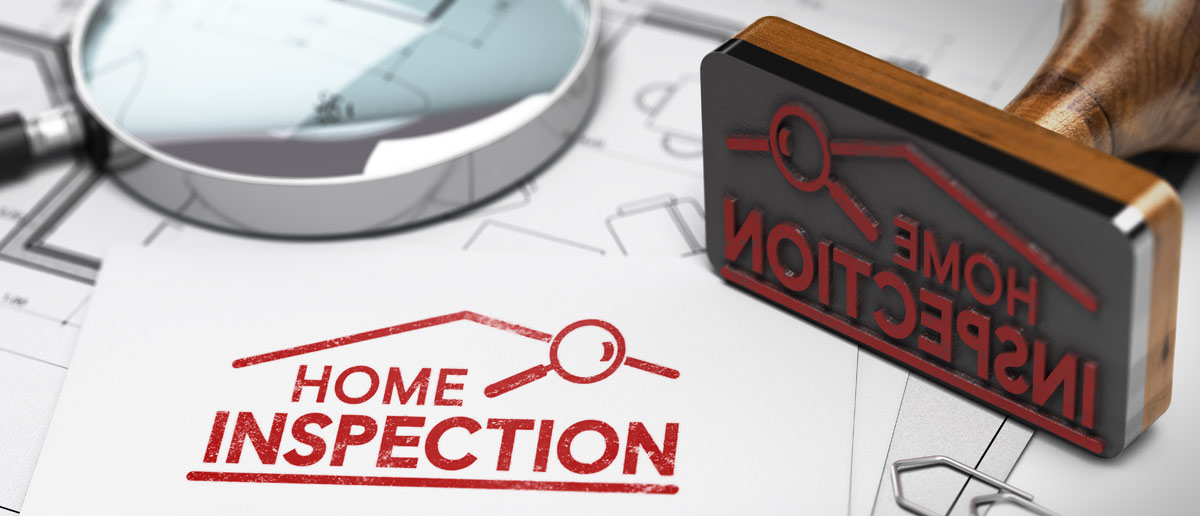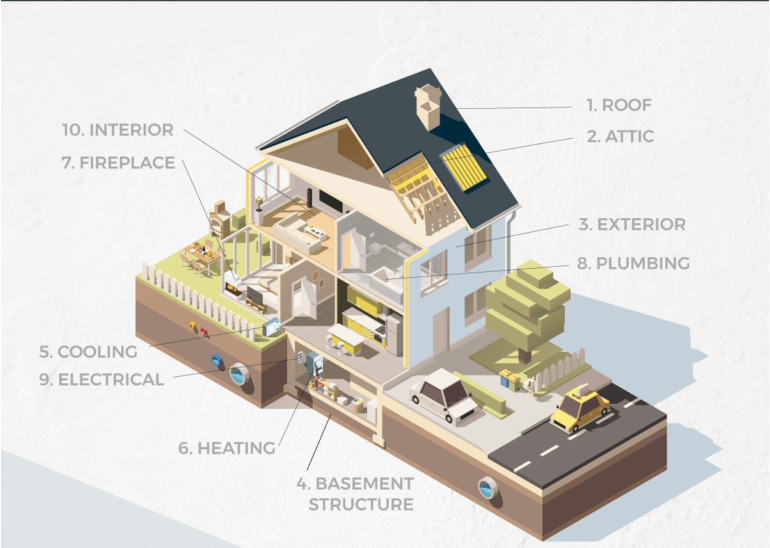What Is Included in a Detailed Residential Property Assessment Process?
An extensive residential property assessment process is crucial for ensuring and protecting investments security. It includes a meticulous evaluation of architectural integrity, electrical systems, pipes, and Cooling and heating devices, among other crucial components. What, then, are the most critical elements that can make or damage a home evaluation?
Introduction of Building Assessment

The examination includes several essential areas, consisting of the outside and interior components, systems such as pipes and electrical, and any noticeable structural elements (Best home inspections). During the procedure, the inspector records the condition of these elements, searching for indications of wear, damage, or potential dangers
A complete building assessment not just assists possible purchasers make informed decisions however also aids present proprietors in understanding required repair work or maintenance jobs. By providing an in-depth report of findings, the evaluation enables stakeholders to prioritize issues that might need instant interest or might influence future investment.
Moreover, a reliable evaluation process sticks to established market standards and guidelines, guaranteeing a constant and dependable evaluation. Generally, the property assessment process is an essential tool in realty deals, promoting transparency and protecting both buyer and vendor rate of interests.
Architectural Analysis

Throughout the evaluation, experts assess various components, including the foundation, framework, walls, and roofing system systems. They try to find indicators of moving or resolving, such as cracks in wall surfaces or uneven floors, which can indicate underlying problems. The examination additionally involves checking out the quality of construction materials and methods used, guaranteeing conformity with building regulations and criteria.
In addition, examiners might check for signs of wetness breach, which can result in wood rot and mold and mildew, additional compromising architectural honesty. They also assess load-bearing elements to ensure they can properly sustain the weight of the structure and its contents.
Eventually, a complete architectural evaluation gives important insights for potential customers and home owners, enabling them to make educated decisions relating to residential or commercial property financial investments and essential upkeep. By recognizing architectural problems early, owners can attend to issues proactively, preserving the long-term worth and safety of the property.
Electrical System Analysis
An efficient electrical system assessment is crucial in the residential or commercial property assessment procedure, as it evaluates the safety, performance, and conformity of a structure's electrical framework - Home inspections. This assessment normally includes a comprehensive exam of the main electric panel, circuit breakers, and electrical wiring systems. Assessors look for indications of wear, corrosion, or damages that might endanger security
The examination consists of testing for ample grounding and bonding, making certain that the electric system is correctly attached to avoid electric shock or fire dangers. Inspectors additionally assess the capability of the electrical system to manage the current load, identifying any type of potential overloading issues that could cause blackouts or failings.
On top of that, the assessment checks for the visibility of GFCI (Ground Mistake Circuit Interrupter) and AFCI (Arc Mistake Circuit Interrupter) tools in proper places, which are vital for protecting versus electrical shocks and stopping fires. Conformity with local building regulations and guidelines is additionally verified to make certain that any type of setups or adjustments meet security requirements.

Pipes and A/c Checks
Following the electrical system evaluation, the pipes and heating and cooling checks are integral elements of the residential property assessment procedure. These examinations guarantee that the vital systems of the property are operating appropriately and safely, consequently safeguarding the financial investment and health of the owners.
Throughout pipes evaluations, professionals examine the problem of pipes, components, and drainage systems. They examine for leaks, rust, and any indicators of water damage that can show bigger problems. The efficiency of water heating systems is also assessed to guarantee they fulfill existing requirements and supply sufficient warm water supply.
Examiners will evaluate the functional efficiency of these systems, making sure that they preserve a comfortable interior atmosphere. In addition, the examiner will certainly look for any kind of indicators of wear or potential safety risks, such as carbon monoxide leaks in home heating systems.
Outside and Inside Assessments
Outside and indoor evaluations are essential elements of the residential property inspection process, offering an extensive summary of a property's condition. The external examination entails examining structural aspects such as the important site roof covering, exterior siding, structure, and windows. Inspectors look for signs of wear, damages, or prospective dangers, including water invasion, mold development, and insect invasions. They likewise examine the bordering landscape, making sure appropriate drain and go to this website recognizing any trees or greenery that may endanger the home.
The interior inspection concentrates on the problem of living areas, consisting of walls, floor covering, and ceilings. Examiners analyze the functionality of home windows, doors, and appliances, while additionally looking for indicators of wetness or architectural issues. Electric systems, plumbing fixtures, and HVAC systems are inspected to ensure they are in functioning order, certified with building regulations, and complimentary from safety dangers.
Both evaluations culminate in a thorough report that highlights critical searchings for and recommendations for repairs or further examinations. This double technique guarantees that prospective customers or proprietors are completely informed regarding the residential property's staminas and weaknesses, allowing them to make well-informed choices.
Conclusion
To conclude, a detailed building evaluation process includes a considerable evaluation of architectural integrity, electric systems, plumbing, and a/c devices, along with thorough exterior and interior assessments - Home inspections. By methodically assessing each critical component, prospective safety and security dangers and conformity with industry standards and neighborhood building codes can be identified. The resultant detailed record serves as a crucial resource, equipping home owners and customers to make informed choices regarding residential property investments and upkeep, inevitably improving safety and security and value
An extensive building assessment procedure is important for guaranteeing and safeguarding investments safety and security.During the evaluation, professionals analyze numerous parts, including the structure, framing, walls, and roofing systems.An effective electric system assessment is essential in the residential or commercial property assessment process, as it examines the safety and security, capability, and compliance of a building's electrical infrastructure.Exterior and interior assessments are critical elements of the building inspection process, providing a thorough summary of a property's condition.In final thought, an extensive residential or commercial property evaluation procedure incorporates a comprehensive assessment of structural stability, electrical systems, pipes, and Cooling and the original source heating units, together with in-depth outside and interior inspections.